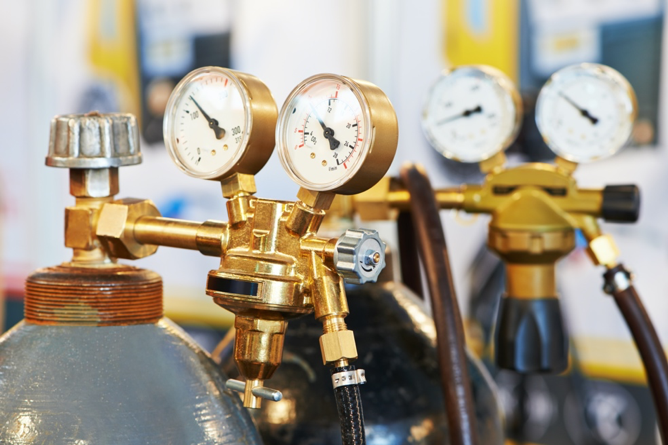Welding can be called an art form. Like art, there are many different ways to weld metal. Welding is the process by which two pieces of metal can be joined together through the use of extreme heat. Sometimes utilizing specific gases and metals can also cause the metallic structures to become one. Some welding techniques call for arc welding, tungsten inert gas (TIG), spot welding, and underwater welding.

Arc welding is a fusion welding process used to join metal. An electric arc from an AC or DC power supply creates intense heat of around 6,500°F that melts the metal to join it together. These metals react chemically to oxygen and nitrogen at such high temperatures. If you are familiar with what soldering is, you may assume that this process of welding is essentially a larger format of soldering. These two operations are fairly similar, but sub-techniques vary. The big difference between soldering and welding is melting points and metals used. Soldering is similar to welding because both use a filler metal into the joint; however, not all welding involves fillers. The filler can be aluminum silicon, brass, copper, copper-silver, gold-silver, nickel alloy, or silver. Unlike arc welding, soldering uses a lower temperature to join metals. While both arc welding and soldering heat up electronically, soldering metals tend to be softer and more conductive. Popular soldering metals include silver, copper, brass, and iron. Soldering also doesn’t hold as strong of a bond as welding because it is not connected mechanically through fasteners like bolts, rivets, or screws. Soldering is usually more small scale, used to form a permanent connection between electronic components.

Tungsten inert gas welding (TIG) became popular in the 1940s for joining magnesium and aluminum. Using a gas shield protects the weld from harmful gases in the atmosphere such as oxygen, carbon dioxide, nitrogen, and water. Also known as noble gases, inert gases are colorless, odorless, and non-chemically reactive. Argon and helium are most used in welding. Argon is present in 1% of air and is a by-product of the air-reduction processes used when producing oxygen. This gas is specifically good for deep pits in the metal or welding in flat positions. Argon is most suitably used with aluminum and nonferrous metals. Adding helium improves the heat properties of argon. However, pure helium is ideal for copper, magnesium, and aluminum. Semi-inert gases have low reactivity like hydrogen, oxygen, carbon dioxide, and nitrogen. Semi-inert gases can be used pure but yield better results when used in combination with other pure inert gases. Combining gases such as argon, carbon dioxide, and hydrogen, for example, can raise the temperature and improve weld penetration. Anyone interested in welding needs to be aware of the roles these gases play and how exactly they interact with each other. The chemistry — the small details — are very important in the world of welding.

Spot welding is one of the oldest techniques used for welding. It’s primarily used for joining parts that are up to 3mm-12.5mm in thickness, and it works through conductive heating that’s created by an electrical current. Two copper electrodes hold the two pieces of metal together as copper is high in thermal conductivity with low electrical resistance. Welds are repeated at regular intervals to effectively solidify the metal into one secure joint. Steel is a great metal for spot welding as it has a higher electrical resistivity for lower thermal conductivity than the copper electrodes, making it relatively to weld.

Underwater welding is actually not as much different from dry land welding as you would think. Many people instantly start getting concerned with the danger of mixing water and electricity. This welding method involves years of training and abundance of knowledge, as well as a certification from the commercial dive school. This is said to be one of the most dangerous occupations in the world. In underwater welding, a dry chamber system is utilized, and hyperbaric chambers are used to prevent water from entering the work area. These chambers can typically hold up to three welders at a time. The chambers are pressurized by the crew on land to exchange air and replace it with new air and minimize potential pressure sickness. Wet welding on the other hand isn’t always done in a pressurized chamber. It’s quicker and cheaper, but also trickier as it cools down more quickly due to the water. Underwater welders and wet welders are able to identify and deal with what comes at them relatively quickly which is what keeps them alive. So, if repairing pipelines, ships, sea habitats, and nuclear power facilities — with a touch of an adrenaline rush — interests you, be warned to approach this trade with much caution and grit.
Different techniques are obviously utilized based on the particular project at hand. It’s important to know and understand all the necessary precautions before beginning welding. Safety and knowledge of chemistry are of main importance when utilizing which procedure will suit your needs most. Regardless of what the task at hand is, MFI has exceptional fabricators with decades of experience ready to tackle any requirement requested of them.

